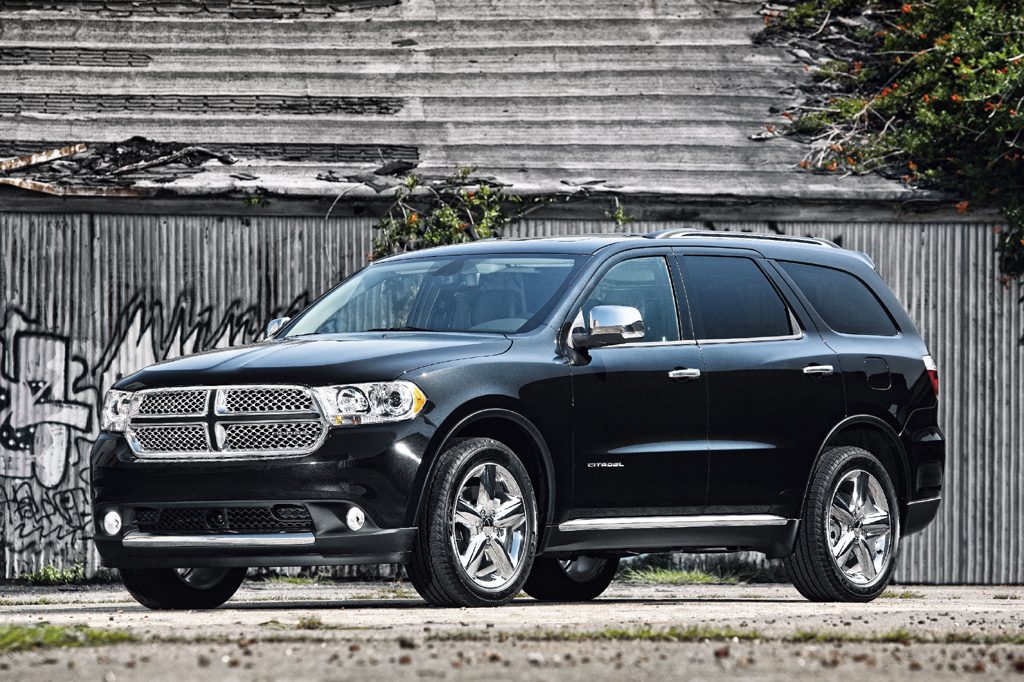

This used to be one of few SUVs that could comfortably haul three rows of adults, but no more. Also, third-row volume shrinks nine cubic feet compared with the last Durango’s. Maybe Dodge is trying to help American moms tone their arms. And although they flop with simple one-handle actuation, the effort required to raise them is substantial. The second- and third-row seats fold flat, but to do so, they are very thin, with hard cushions. The RWD example we tested came in at a more reasonable $37,390, including only the $850 sunroof option.Įvery Durango except the two-row-only Heat comes with standard seating for seven. The AWD Durango’s total was $43,400, eye watering but not totally unreasonable for a workhorse family vehicle with a stonking V-8. Another $695 netted a towing package-with the Hemi, the Durango is rated to tow up to 7400 pounds-and $750 was wasted on adaptive cruise control. Our AWD R/T had it and also came with a rear-seat DVD entertainment package ($1695) that, interestingly, requires the sunroof ($850) (a ceiling-mounted entertainment system and a sunroof often are an either/or proposition). The rearview camera, part of a $695 package that includes navigation, is a worthwhile investment.

The Magnum-esque window line and thick C- and D-pillars (necessary to meet rollover standards) do hinder visibility, however. They are comfy and supportive, with the right amount of bolstering for a sporty family vehicle-enough to let you know they care without encouraging the sort of driving that’ll have the rugrats screaming in their child-safety seats. With a tilting-and-telescoping steering wheel standard on all Durangos, it’s easy to find the perfect driving position, and the front seats fit the ute’s sporty persona. The complaints might be quieter, however, were our roads smoother. It’s an expected trade-off in a performance vehicle but not one we anticipated in an SUV. They crash over bumps and potholes, and the stiffer suspension sends hefty tremors through the body shell and steering column. The downside to the R/T is serious tromp from the 20s. The AWD R/T’s hero brakes need just 169 feet to stop the big bruiser from a freeway tempo, with the rear-drive R/T taking an additional eight feet. It’s slow off-center-all the better for relaxed highway tracking-and effort builds as the limit nears and the wheel offers a good amount of feedback. The AWD R/T proved to be slightly better on the skidpad, where we recorded 0.81 g of stick compared with 0.79 g for the rear-driver. There’s a touch of understeer at the limit, and a delightful enthusiasm for rotation, which is easy to control and rein in with the all-wheel-drive system or prolong without it.

Note that the RWD’s 50/50- and AWD’s 51/49-percent front-to-rear weight distributions are the sort of figures that get us excited about sports sedans. The Durango is a handler, with minimal body roll-particularly for something so tall. Like the Heat and Citadel trims, the R/T includes 20-inch wheels.Īll that stiffening paid off. The R/T further stiffens the shocks and springs and lowers the ride height by 0.8 inch. Additionally, the Durango’s shock and spring rates are stiffer, and it has larger anti-roll bars.
#2011 dodge durango forum full#
The two trucks’ suspension layouts are the same, but the Dodge is longer than the Jeep by a full 10 inches, with an extra five between its axles. Whereas its Jeep cousin perpetuates that brand’s dirt fetish, the Durango pursues sport in a different discipline. The formerly body-on-frame Durango now rides on a unibody platform it shares with the Jeep Grand Cherokee, the same platform Mercedes-Benz will employ under its next ML and GL. For starters, there’s the small matter of the absentee frame. If you studied only the critical dimensions, which are nearly dead on with the old truck’s, you’d be forgiven for thinking Dodge spent the interim working on a face lift. After moving 137,148 of the trucks in 2004, Dodge watched Durango sales nose-dive to barely half that two years later and a mere 21,420 in 2008, after which point the Durango disappeared. But not much.” Sales of the Durango certainly didn’t get any better. After shepherding a last-gen truck for 40,000 miles, we concluded, “Does it get better than this? Maybe. Through its first two generations, the Dodge Durango was sort of an enthusiast secret, a quietly competent and unusually fun-to-drive SUV. Update: This test initially featured only the R/T AWD, but we have since tested a rear-drive R/T and added the results to the story below.


 0 kommentar(er)
0 kommentar(er)
